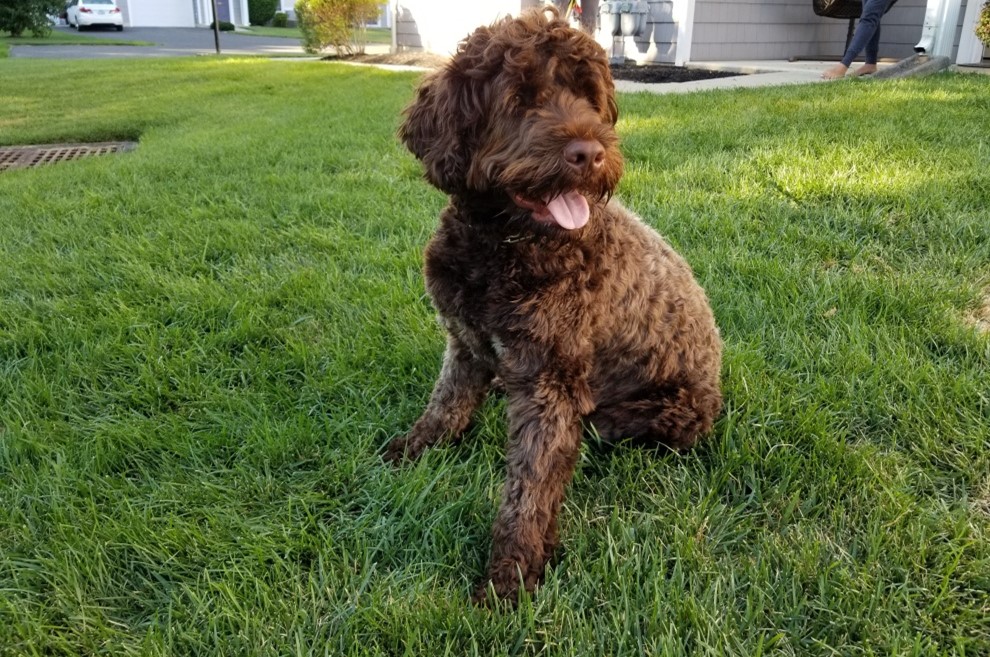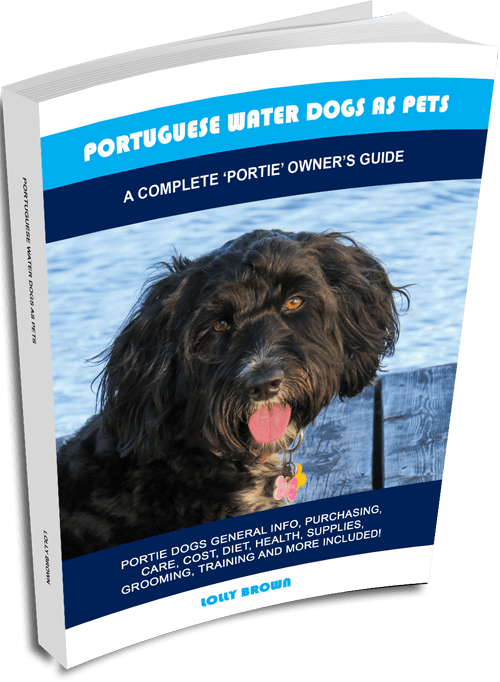CHAPTERS
Navigate to chapter
► Chapter One: All About the ‘Portie’
► Chapter Two: Selecting a Portie Breeder and Portie Puppy
► Chapter Three: Shelter and Supplies for Your Porties
► Chapter Four: Food for Your Portie
► Chapter Five: Crate Training and Grooming
► Chapter Six: Purebred Standards and Showing Your Portie
► Chapter Seven: Health Information for Porties
Chapter One: All About the ‘Portie’

The Portuguese Water Dog was developed in Portugal, and thanks to the fishermen, this particular dog breed had gotten used to being around bodies of water and became quite fond of getting wet. This is because they served as the fisherman’s right hand man for centuries during their fishing endeavors. Needless to say, these cute and fluffy dogs were once part of the ‘crew’ – they used to help their mates retrieved nets, carry around fish bags from one boat to another, deliver messages, serve their masters, and pretty much do anything that their owners tasked them to do with finesse and enthusiasm.
As time goes by, fewer people need the breed’s water – logged service which is why the Portuguese Water Dog’s cleverness and obedience have been put to other uses. They were used to retrieve home run balls that went to the water during baseball games particularly at the time when San Francisco opened its new bayside ballpark for the San Francisco Giants. A group of Porties became known as the Baseball Aquatic Retrieval Korps (BARK), and eventually became quite an attraction of their own.
As you many now have learned, the portie will happily do almost anything you asked of them if you choose to keep them as a pet. The breed’s hard – working, obedient and loyal character also serves them well in many canine sports as well as various outdoor activities like hiking, boating, and helping children chase a soccer ball – or any ball for that matter. You won’t have problems for creating activities for your pet Portie but you’ll surely have a problem keeping up with their energy. You need to find the time to make sure that your pet is busy and well – cared for. It’s not ideal that you acquire this breed if you or your family doesn’t have time to spare because they need your full attention.
This breed is a great family pet and they are usually great with children but they will need to be supervised especially if they child is too young. The Portuguese Water Dog can be quite rambunctious at times and some Porties are quite large and heavy which can be too much for toddlers to handle.
This chapter will provide you with information regarding the Portuguese Water Dog’s amazing personality and temperament. You’ll also get to learn the pros and cons of keeping one as a pet.
- This dog breed sports a curly to wavy coat that comes in a variety of colors with or without white markings. The most common coat colors are black and brown. The least common color is a white coated portie.
- The Portie breed can also remain fully coated or sport a sort of ‘lion’ clip with a bare rear. Their coat can be wavy or curly.
- Portuguese water dog breeds that sports a curly coat are somewhat more loosely coiled than that of a Poodle dog breed. They also don’t shed as much but if left untrimmed, obviously they will continue to grow and can be quite a chore for you so make sure that you keep up with their grooming needs. We will discuss more about grooming in the next few chapters.
- This may not be the right pet for people with allergies although some may be able to tolerate them. However, keep in mind that there’s no such thing as a dog that will not cause any sort of allergic reaction. What you can do if you’re quite sensitive is to make sure to get your portie groomed every other month and brush their coats thoroughly at least every week.
Portuguese water dogs have three qualities that make them stood out of the rest of the dog breeds: cleverness, obedience, and energy. It’s a very agile dog breed that thrives for physical and mental stimulation. Needless to say, the more challenging something is for them, the more they enjoy doing it. Apart from these great traits, they are also a family – friendly dog that loves to look after their owners because they treat their owners as “part of the pack.” These pets need to be with a family because they don’t like being left alone at home or left for a long period of times in their kennels. This dog breed thrives in the midst of an active family.
The Portuguese water dog highly requires vigorous exercise activities that will enable them to sharpen their agility and obedience skills. It’s ideal that you prepare activities like canine sports, daily romps and of course swimming! Due to its heritage as a water dog, this breed has a special affinity for water – related activities, making swimming the best way for them to burn off their energy and have fun at the same time.
This dog breed is also a natural when it comes to playing with kids. However, the dog’s natural exuberance may cause them to play a bit rough with children so make sure that an adult is supervising them or you have taught/ trained your pet to play nicely with people and keep his mouth to himself. It’s also best to teach your kids to not make any rough plays with the dog to avoid any sort of mishaps.
Just like any other dog breeds, the portie pup should preferably be trained at a young age. Even if these dogs are just 8 weeks old, they can already learn some good manners. It’s best to train and socialize them before they reach 6 months old. We also highly recommend that you enroll your portie pup in a puppy kindergarten class if possible when he/she reaches between 10 and 12 weeks old because this is the best age to teach them basic training and socialization skills. However, you should also be aware that many puppy training classes require the pups to be vaccinated with kennel cough or the likes; it must also be up – to – date. There are also many vets that recommend the young pups to have limited exposure to public places and other dogs until they receive the needed vaccinations such distemper, parvovirus, and rabies and that these vaccines have been completed.
Continue Reading…
Want to read the entire thing?

